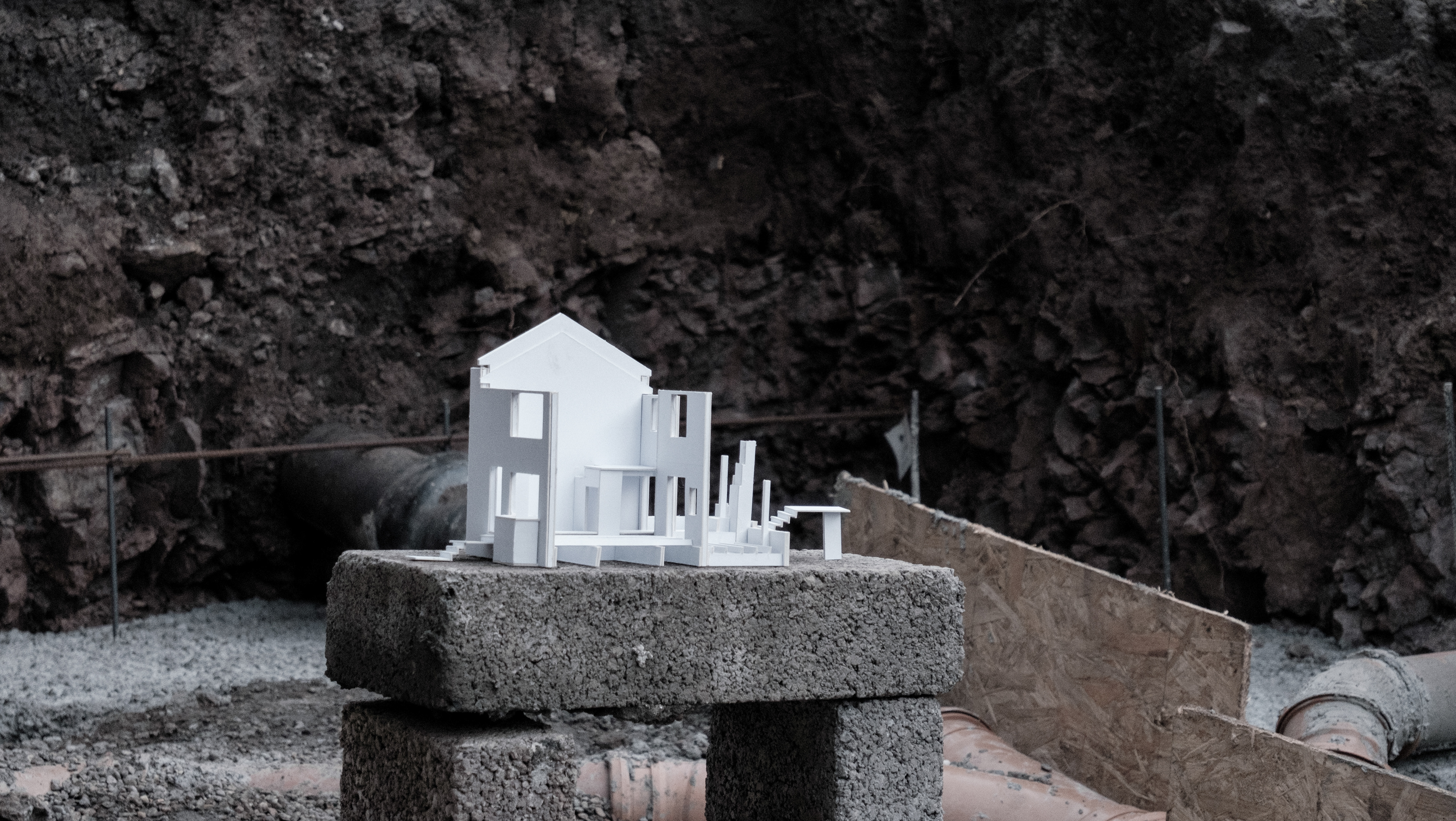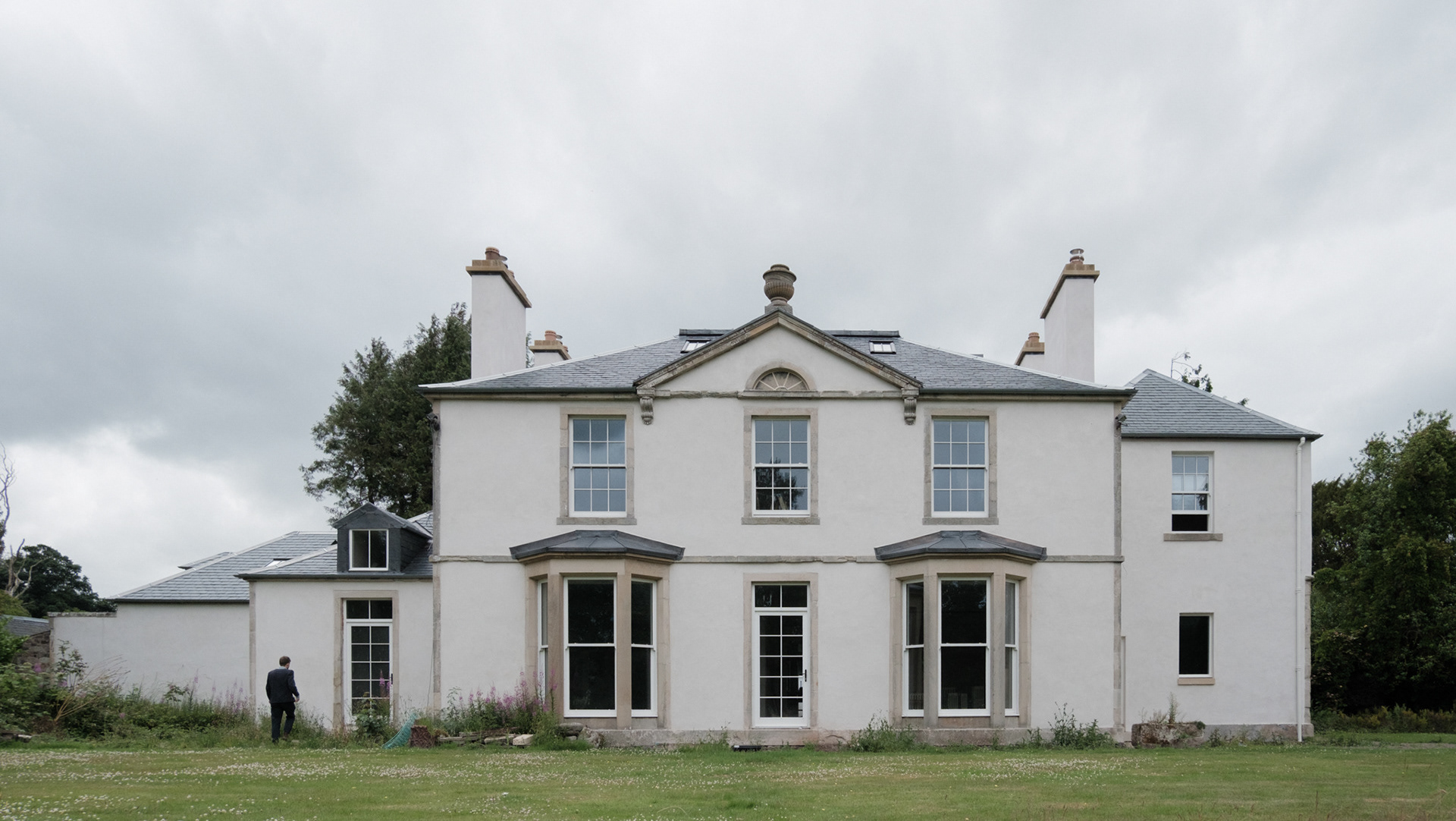This 19th Century red sandstone farm steading in East Lothian sits as the last building before the Lammermuir Hills, looking back across to the Firth of Forth and Fife. Castle Moffat steading has no castle associated with it, it is a purpose-built farm steading with a fair collection of squat towers and castellated details. Some of the original architecture was pulled down to insert a mass stock shed in the 1970s. The proposals are for a phased restoration of the steading, returning the courtyard to its former shape and character.
The owner is the founder of Chippendale international Furniture School based nearby and the first stage of designs see the conversion of a former barn into studio flats for ten students with a shared common room and laundry. Each studio has its own front door bringing activity to the former working courtyard of the farm and many of the flats occupy two floors to make them imaginatively spacious. They all share a common room, giving a social heart to the rural community, it occupies a double-height space in the centre making good of large tractor openings already knocked into the building.
The architecture is necessarily nookish, responding to the existing variety of opening sizes and ambiguous elevation compositions, folding flats around one another in section. The first floor inhabits a combed ceiling and is lit by a combination of deep-set low windows and new skylights. Internal insulation thickens the already deep stone walls, making niches for memories. At the courtyard side, this layering of history sees a mannerist re-writing of the tractor opening with new barn doors fixed at half-open, creating a multiplication of new openings within their depth: a door, four windows and outdoors bench, all as an expanded threshold to the common room.
At a time when rural life is flagging as activity moves towards the cities, this project seeks to define an alternative path. The countryside economy is part of a continuous line of human endeavor that stretches far into the past. This development seeks to define how we, as living participants of this heritage, can continue to refashion and work our built environment to meet the needs that our current age presents, adapting our surroundings as part of a living vernacular.











